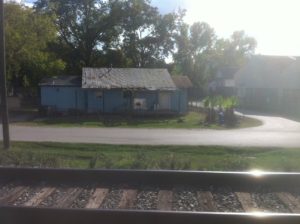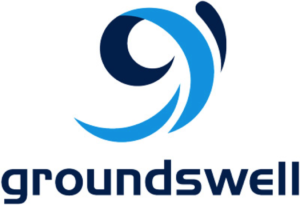Doing Something Along the Other Side of the Tracks

2-3 years ago I encountered several folk who asked me what green initiatives like LEED offer to the poor. Fortunately, I had an (one) answer. I knew the Annapolis Housing Authority was putting solar PV panels on the roofs of its public housing. Admittedly, this doesn’t answer for the poor and working classes who don’t get “utility allowances” from their landlords.

This disparity landed in my face again–well, my ear–when listening to an NPR interview of a young man living on the wrong side of the tracks. He said something to the effect, “They’re greedy,” referring to those on the prosperous side of the tracks. “They get their’s but it isn’t enough. They should share what they got.”
Some of you may read something political in the young man’s statement.
But, let’s disregard political persuasions as this post is about organizational wealth-sharing on the other side of the tracks, in deed.
My sources are the May/June 2016 issue of USGBC+ Transporting Our Built Environment, and an email from gridalternatives.org which subject line is: “We’re excited to be part of the White House’s Clean Energy Savings for All Americans Initiative!”
 From the former, there’s a column called “Letters from our Leaders” which featured Michelle Moore, CEO of Groundswell. That caught my attention because Groundswell has helped my former and current churches (not on the other side of the tracks, to be sure), and other non-profits of all sorts, procure price-competitive quotes for renewable solar or wind energy in place of a mix of “dirty” energy sources of which the predominant one is my area is coal.
From the former, there’s a column called “Letters from our Leaders” which featured Michelle Moore, CEO of Groundswell. That caught my attention because Groundswell has helped my former and current churches (not on the other side of the tracks, to be sure), and other non-profits of all sorts, procure price-competitive quotes for renewable solar or wind energy in place of a mix of “dirty” energy sources of which the predominant one is my area is coal.
But- “What does the sustainability movement look like from the perspective of economic equity?” Moore asks. “You might measure your response in how much affordable housing is LEED certified [what I do for a living], or whether there’s a cost premium for green. But if you’re a family living in poverty paying 10 percent of your total income for dirty power, is the promise of sustainability accessible to you?”
Not very, so far.
Moore goes on to say that about 16M Americans are paying more than 10% of their income for power. Other metrics she reports include 46% of all households so burdened by energy costs are located in the South. 50% of so burdened households are occupied by African-Americans nationwide.
Groundswell is helping to bring “community solar” to renters, homeowners and neighborhoods. Under this nascent program, participant households, including small businesses, can purchase subscriptions to a central solar array located within their uniquely defined geographic areas so as to become a distributed energy micro-grid.
Through its association with Sustainable Capital Advisors, a young company developing financial underwriting guidelines that take “consumer credit scores off the table,” the strategy is to broaden the pool of participants, thus lessening dependence on the payback ability of a particular household. Roughly speaking, it’s a private variation on municipal finance.
 Interfaith Power & Light, “offering a religious response to global warming,” helps faith-based organizations become more energy efficient. It “aggregates” these organizations, its members, and other non-profits to enable Groundswell to obtain for them multiple competitive bids by power companies offering 100% clean (wind) energy.
Interfaith Power & Light, “offering a religious response to global warming,” helps faith-based organizations become more energy efficient. It “aggregates” these organizations, its members, and other non-profits to enable Groundswell to obtain for them multiple competitive bids by power companies offering 100% clean (wind) energy.
 IFP of Minnesota (MNIPL) took a variation on the theme, targeting low-income households through “The Just Community Solar Coalition,” formed in 2014. A community solar project of this coalition is set in the heart of North Minneapolis. Shiloh Temple International Ministries, a Pentecostal church, agreed to allow its building rooftop as host site for a 200+ kw solar array, called a “community solar garden.” This project is expected to produce enough power to offset the electricity needs of about 50 homes.
IFP of Minnesota (MNIPL) took a variation on the theme, targeting low-income households through “The Just Community Solar Coalition,” formed in 2014. A community solar project of this coalition is set in the heart of North Minneapolis. Shiloh Temple International Ministries, a Pentecostal church, agreed to allow its building rooftop as host site for a 200+ kw solar array, called a “community solar garden.” This project is expected to produce enough power to offset the electricity needs of about 50 homes.
Major participants include the church and the Minneapolis Urban League. Residents of North Minneapolis and church members have priority subscriber rights. For remaining subscriber slots, they may come from a large swath of geography around the church, meaning surrounding counties. The other criteria per the church’s website is that subscribers must:
- Pay an electricity bill to Xcel Energy, the utility that is required by state law to provide bill credits. Renters, homeowners, businesses, non-profits, and local government entities like schools or park buildings can all participate if they pay an electric bill. If your landlord pays the electric bill, you can get them to subscribe for you [italics mine].
For a clear picture of what community solar gardens enable, please see this video about The Just Community Solar Coalition-
Again to the question of the promise of sustainability accessible to low-income Americans. Stay tuned. Things are a’changin’.